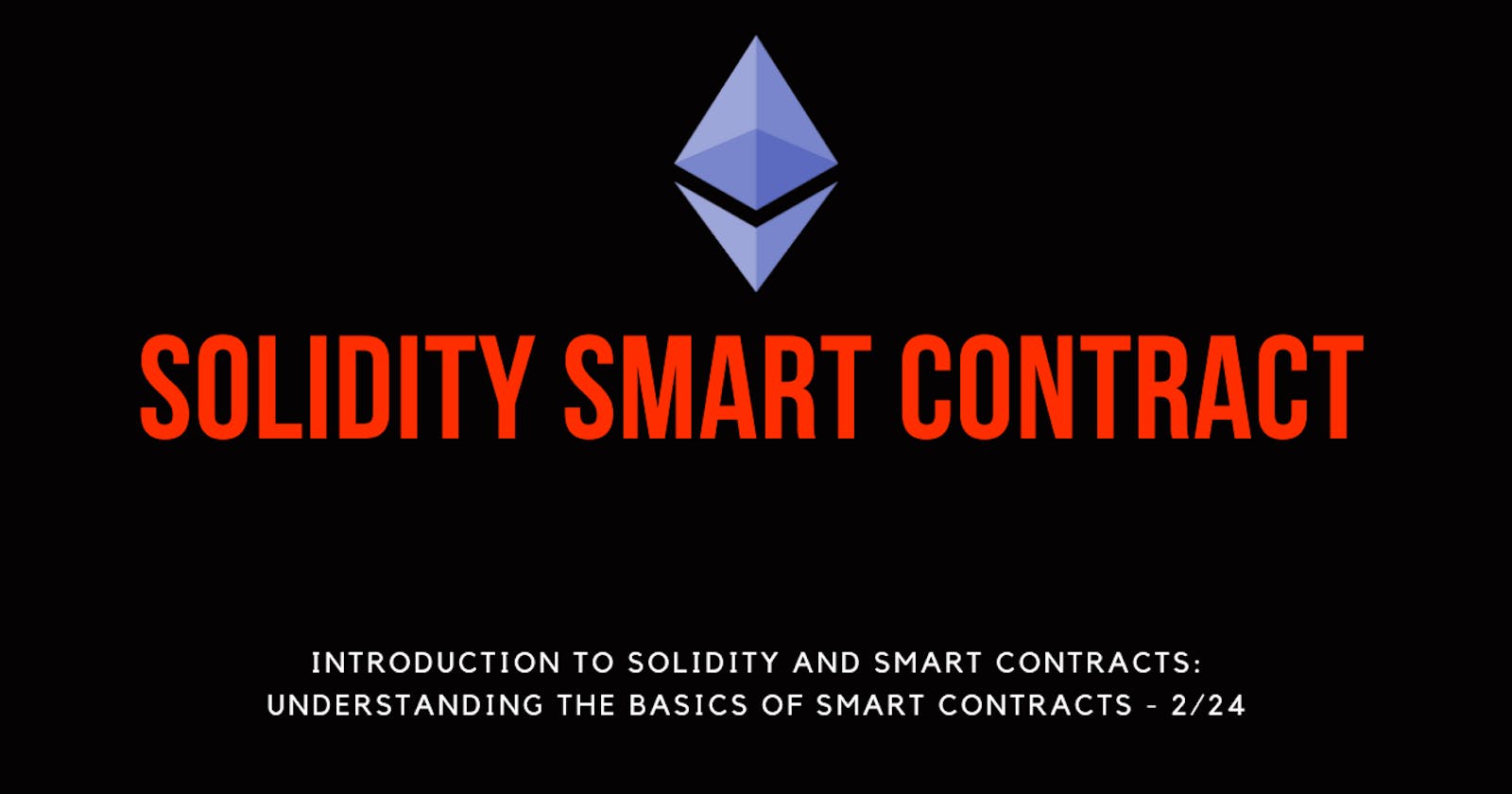Introduction to Solidity and Smart Contracts: Understanding the Basics of Smart Contracts
2 / 24 article tutorial series on Solidity development
Welcome to the second article in our comprehensive 24-article tutorial series on Solidity development! In this series, we are taking you on a journey to become a proficient blockchain developer, starting from the fundamentals of Solidity and smart contracts and progressing to more advanced topics, including security, auditing, and much more. Don't forget to subscribe to receive updates and notifications as we release each new article in the series.
What are Smart Contracts?
Smart contracts are self-executing contracts with the terms of the agreement directly written into code. They run on the blockchain and automatically execute when specific conditions are met. Unlike traditional contracts, smart contracts eliminate the need for intermediaries, as they are self-verifying and self-enforcing. Once deployed, they cannot be altered, providing transparency, security, and trust to the parties involved.
Understanding the Basics of Smart Contracts:
To comprehend smart contracts better, let's break down some key concepts:
Decentralization: Smart contracts are deployed on decentralized blockchain platforms like Ethereum, which means they are not controlled by any single entity or authority. The code execution is distributed across the network, making it censorship-resistant and immutable.
Autonomy: Once deployed, smart contracts function autonomously without human intervention, as their execution is triggered by predefined conditions written in the code.
Digital Agreements: Smart contracts can represent various types of agreements, from financial transactions to supply chain management, voting systems, and more. The terms of the agreement are written in code, ensuring compliance with the agreed-upon rules.
Transparency: All interactions with smart contracts are recorded on the blockchain and can be publicly viewed, ensuring transparency and accountability.
Trustlessness: Smart contracts eliminate the need to trust a third party, as their execution and results are verifiable on the blockchain, reducing the risk of fraud.
The Role of Solidity in Smart Contracts:
Solidity plays a crucial role in the development of smart contracts on the Ethereum platform. As a high-level programming language, Solidity allows developers to write code that defines the logic and behavior of smart contracts. It supports various data types, control structures, and functions that enable developers to implement complex business logic in the form of smart contracts.
How Smart Contracts are Executed:
When a smart contract is deployed on the blockchain, it becomes part of the distributed ledger, and its address is recorded on the network. To interact with the contract, users send transactions to its address, triggering the execution of specific functions within the contract. The contract processes the transaction, updates its state if necessary, and stores the results on the blockchain.
Conclusion:
Understanding the basics of smart contracts and their significance in the blockchain ecosystem is crucial for becoming a proficient Solidity developer. Smart contracts revolutionize the way agreements are executed, providing transparency, security, and autonomy. As we progress through this tutorial series, you will learn how to write, deploy, and secure smart contracts using Solidity and explore various use cases that leverage the power of blockchain technology.
Solidity E-books
https://ismailsaleem.gumroad.com/?query=solidity

